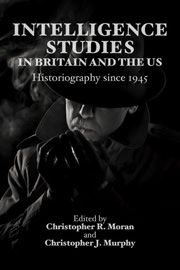Book contents
- Frontmatter
- Contents
- The Editors
- The Contributors
- List of Figures
- Preface
- Acknowledgements
- Introduction: Intelligence Studies Now and Then
- Part I AMERICAN INTELLIGENCE HISTORIOGRAPHY
- Part II BRITISH INTELLIGENCE HISTORIOGRAPHY
- 9 A Plain Tale of Pundits, Players and Professionals: The Historiography of the Great Game
- 10 No Cloaks, No Daggers: The Historiography of British Military Intelligence
- 11 The Study of Interrogation: A Focus on Torture, But What About the Intelligence?
- 12 Whitehall, Intelligence and Official History: Editing SOE in France
- 13 A Tale of Torture? Alexander Scotland, The London Cage and Post-War British Secrecy
- 14 1968 – ‘A Year to Remember’ for the Study of British Intelligence?
- 15 Their Trade is Treachery: A Retrospective
- 16 Intelligence and ‘Official History’
- Index
9 - A Plain Tale of Pundits, Players and Professionals: The Historiography of the Great Game
from Part II - BRITISH INTELLIGENCE HISTORIOGRAPHY
Published online by Cambridge University Press: 05 October 2013
- Frontmatter
- Contents
- The Editors
- The Contributors
- List of Figures
- Preface
- Acknowledgements
- Introduction: Intelligence Studies Now and Then
- Part I AMERICAN INTELLIGENCE HISTORIOGRAPHY
- Part II BRITISH INTELLIGENCE HISTORIOGRAPHY
- 9 A Plain Tale of Pundits, Players and Professionals: The Historiography of the Great Game
- 10 No Cloaks, No Daggers: The Historiography of British Military Intelligence
- 11 The Study of Interrogation: A Focus on Torture, But What About the Intelligence?
- 12 Whitehall, Intelligence and Official History: Editing SOE in France
- 13 A Tale of Torture? Alexander Scotland, The London Cage and Post-War British Secrecy
- 14 1968 – ‘A Year to Remember’ for the Study of British Intelligence?
- 15 Their Trade is Treachery: A Retrospective
- 16 Intelligence and ‘Official History’
- Index
Summary
DEFINING THE GREAT GAME
During the nineteenth century, the inexorable acquisition of territories across Central Asia by Russia seemed to menace the security of British India. In response, the British tried to reach agreements with St Petersburg, launched military campaigns to secure their Indian borders and attempted to coerce the Afghans, Persians and Tibetans into protected spheres of influence. The British authorities in India sent intelligence agents to survey, map and monitor the approaches to the Indian subcontinent in preparation for a war that appeared to some, at least, as inevitable. This was the classic ‘Great Game’ immortalised by Rudyard Kipling (see Figure 11). There was, however, an internal dimension to the threat. The British did not, on the whole, fear an invasion of India itself, which could be thwarted, but they were concerned that anti-colonial sedition within India could be spread, if Russia drew close to the subcontinent or demonstrated its military prowess. These developments would, in turn, require a larger garrison and a greater financial outlay. Sir John Malcolm – who served in Tehran as a diplomat – captured the essence of that threat, when he stated that Russian strategy involved: ‘threatening and disturbing our Indian Empire in a degree that will have the immediate effect of injuring our resources and may ultimately endanger our power’.
- Type
- Chapter
- Information
- Intelligence Studies in Britain and the USHistoriography since 1945, pp. 183 - 201Publisher: Edinburgh University PressPrint publication year: 2013



